The Synoptic Flow era
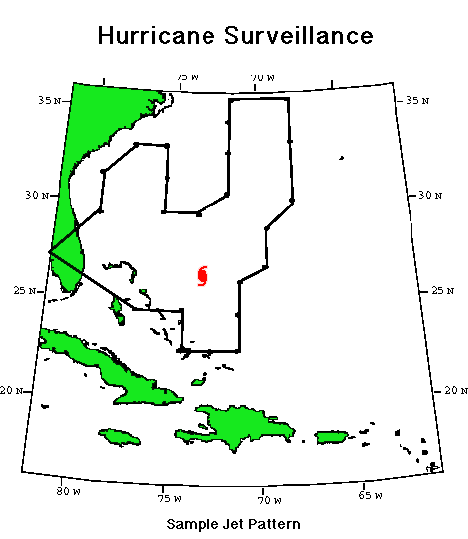 With Hurricane Debby in 1982 the Lab began a
series of experiments using Omega dropwindsondes to fill in the
vast oceanic data voids in the forecast models. One or both P3s
would fly synoptic scale patterns around the hurricane, and every
20 minutes or so drop a sonde out of the plane. The dropwindsonde
would drift down on a parachute and radio back to the plane the
temperature, humidity, and pressure, and using the Omega navigational
signals, triangulate its position. This information was used by
the plane's computer to estimate the winds the sonde was falling
through. Put together with other drops a three dimensional profile
of the synoptic-scale atmosphere surrounding the storm was synthesized.
Including this vital information in the hurricane track forecast
models was shown to improve the accuracy by 20-30%.
With Hurricane Debby in 1982 the Lab began a
series of experiments using Omega dropwindsondes to fill in the
vast oceanic data voids in the forecast models. One or both P3s
would fly synoptic scale patterns around the hurricane, and every
20 minutes or so drop a sonde out of the plane. The dropwindsonde
would drift down on a parachute and radio back to the plane the
temperature, humidity, and pressure, and using the Omega navigational
signals, triangulate its position. This information was used by
the plane's computer to estimate the winds the sonde was falling
through. Put together with other drops a three dimensional profile
of the synoptic-scale atmosphere surrounding the storm was synthesized.
Including this vital information in the hurricane track forecast
models was shown to improve the accuracy by 20-30%.
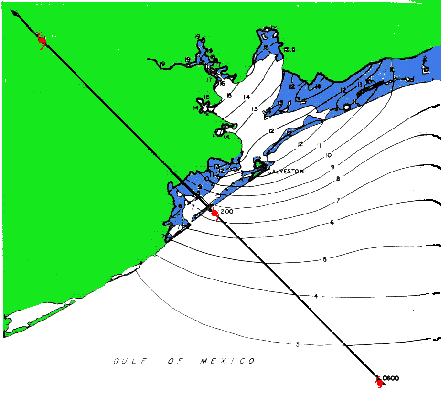 A contingent of HRD scientists and technicians remained stationed
at NHC to compile catalogs of output from a new storm surge model,
the Sea, Lake Overland Surges from Hurricanes (SLOSH). These catalogs
mapped possible hurricane flooding and required that each basin
be meticulously, numerically rendered. These catalogs were then
given to emergency personnel in the target cities to aid in evacuation
planning.
A contingent of HRD scientists and technicians remained stationed
at NHC to compile catalogs of output from a new storm surge model,
the Sea, Lake Overland Surges from Hurricanes (SLOSH). These catalogs
mapped possible hurricane flooding and required that each basin
be meticulously, numerically rendered. These catalogs were then
given to emergency personnel in the target cities to aid in evacuation
planning.
Computer modeling during the early 1980's involved work on
a 12 level nested grid model as well as quasi-spectral and
non-hydrostatic models. On going studies at this time
included hurricane forecast track errors, rainfall estimates
from land based radars near land-falling storms, and air-sea
interactions under hurricanes.
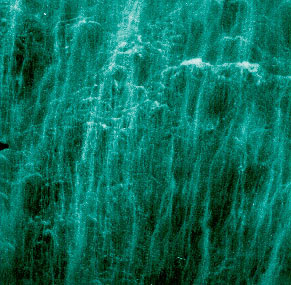 HRD and AOC used films taken during hurricane flights to
update the long out-of-date sea surface catalog used to estimate
surface wind speeds by flight directors. Thousands of frames of
35mm and 16mm film were searched for examples, and then correlated
to the aircraft wind speed. Sophisticated planetary boundary layer
models were used to estimate the surface wind speed that went
with those flight level pictures.
HRD and AOC used films taken during hurricane flights to
update the long out-of-date sea surface catalog used to estimate
surface wind speeds by flight directors. Thousands of frames of
35mm and 16mm film were searched for examples, and then correlated
to the aircraft wind speed. Sophisticated planetary boundary layer
models were used to estimate the surface wind speed that went
with those flight level pictures.
A new remote sensing instrument, the Step Frequency Microwave
Radiometer (SFMR), was installed in 1983 on one of the P3s.
Using the returned microwaves from a downward pointing
antenna, and comparing them with an ideal return, the device
could estimate the wind speed on the ocean's surface.
HRD scientists have been involved in several
modifications to the SFMR in efforts to make it an operational
part of the aircraft's instrument suite.
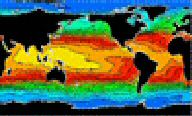 The dramatic El Niño of 1982/83 spurred research into the
relationship of ENSO and Atlantic hurricane frequency, and also
renewed interest in hurricane climatology. The historical record
was searched for possible precursor signals that might hint at
future tropical activity. AOML researchers began looking at decadal
and longer patterns in hurricane occurrence that might be linked
to long term oceanic cycles.
The dramatic El Niño of 1982/83 spurred research into the
relationship of ENSO and Atlantic hurricane frequency, and also
renewed interest in hurricane climatology. The historical record
was searched for possible precursor signals that might hint at
future tropical activity. AOML researchers began looking at decadal
and longer patterns in hurricane occurrence that might be linked
to long term oceanic cycles.
The mid-1980's was a period when research concentrated on
the new Doppler radar and cloud physics data. Papers were
published on heat budgets, storm structure, wind fields,
and drop spectra.
HRD's microphysicists and radar specialist participated
in the preliminary STORM (pre_STORM) experiment in the spring
of 1985. Pre_STORM studied mesoscale convective complexes
in the vicinity of Oklahoma to better understand their
structure, dynamics, and predictability. Although the
STORM experiment itself never achieved funding, the data from
pre-STORM were processed by the Division scientists
and gave them experience in collaborating in a large,
multi-agency operation that would become invaluable over the
next few years.
Theoretical studies were undertaken to define how asymmetries
in the hurricane wind field would affect the track. Model
symmetrical storms had asymmetries introduced into their
wind fields and the tracks compared. The evolution of the
wind field was also studied.
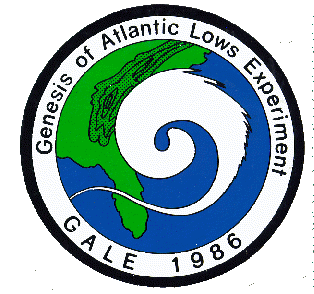 The skills of several Division scientist in dropsonde processing,
airborne weather research, and land based radar recording led
to them be involved in the Genesis of Atlantic Lows Experiment
(GALE) in 1986. The experiment was designed to examine winter
storms off the east coast of the United States, with an emphasis
on explosively developing storms. Of value in itself, it was also
hoped the knowledge gained from GALE would give new insights into
rapidly intensifying hurricanes.
The skills of several Division scientist in dropsonde processing,
airborne weather research, and land based radar recording led
to them be involved in the Genesis of Atlantic Lows Experiment
(GALE) in 1986. The experiment was designed to examine winter
storms off the east coast of the United States, with an emphasis
on explosively developing storms. Of value in itself, it was also
hoped the knowledge gained from GALE would give new insights into
rapidly intensifying hurricanes.
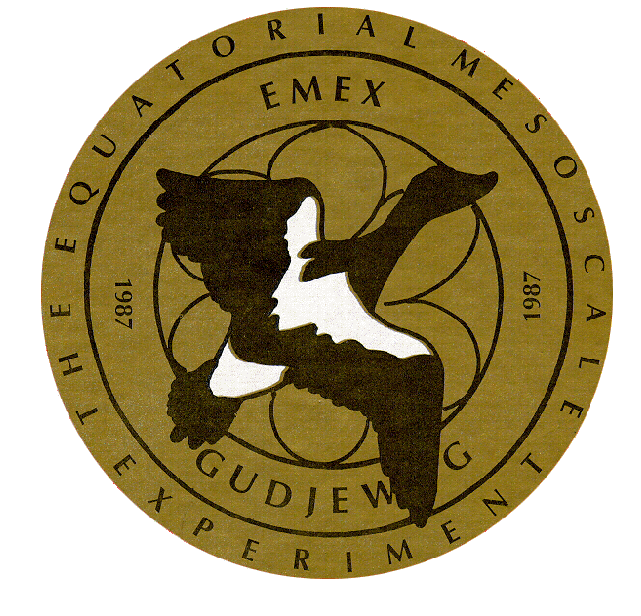 The following year, HRD scientists traveled with the NOAA
P3s to Darwin, Australia to participate in the Equatorial Mesoscale
Experiment (EMEX). EMEX was to profile oceanic cloud clusters
in the monsoonal flow near the equator. This data would be important
in topical meteorology, climate studies, and in global climate
models.
The following year, HRD scientists traveled with the NOAA
P3s to Darwin, Australia to participate in the Equatorial Mesoscale
Experiment (EMEX). EMEX was to profile oceanic cloud clusters
in the monsoonal flow near the equator. This data would be important
in topical meteorology, climate studies, and in global climate
models.
In 1991 the USAF tried to end its hurricane reconnaissance
duties, but under public pressure opted instead to transfer
Hurricane Hunter responsibilities to a Reserve squadron.
In 1993 they were again designated the 53rd WRS.
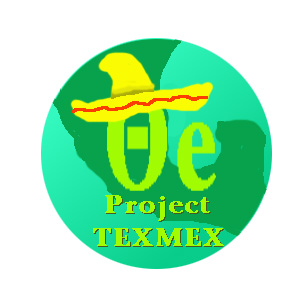 During the Summer of 1991 HRD personnel travelled to Acapulco,
Mexico with the NOAA P3s to participate in the Tropical EXperiment
in MEXico (TEXMEX). Headed by Dr. Kerry Emmanuel (MIT), the experiment
was designed to investigate incipient tropical cyclones as they
moved into the Eastern North Pacific, off the Mexican coast, and
look at the role of moisture, as measured by equivalent potential
temperature, in the formation of hurricanes.
During the Summer of 1991 HRD personnel travelled to Acapulco,
Mexico with the NOAA P3s to participate in the Tropical EXperiment
in MEXico (TEXMEX). Headed by Dr. Kerry Emmanuel (MIT), the experiment
was designed to investigate incipient tropical cyclones as they
moved into the Eastern North Pacific, off the Mexican coast, and
look at the role of moisture, as measured by equivalent potential
temperature, in the formation of hurricanes.
Troubles forecasting the intensity changes of Hurricane Joan in
1988 inspired HRD scientists to try and improve on SHIFOR,
the climate and persistence intensity forecast model used as a
benchmark. By 1989 work had begun on the Statistical Hurricane
Intensity Prediction Scheme (SHIPS). The scheme became operational
at NHC in 1995, and by 1997 was showing skill over SHIFOR. The
field of intensity forecasting still presents an area where
considerable improvment may be made, and HRD continues
to collaborate with Co-operative Institute for Research in
the Atmosphere (CIRA) scientists on research to improve the SHIPS.
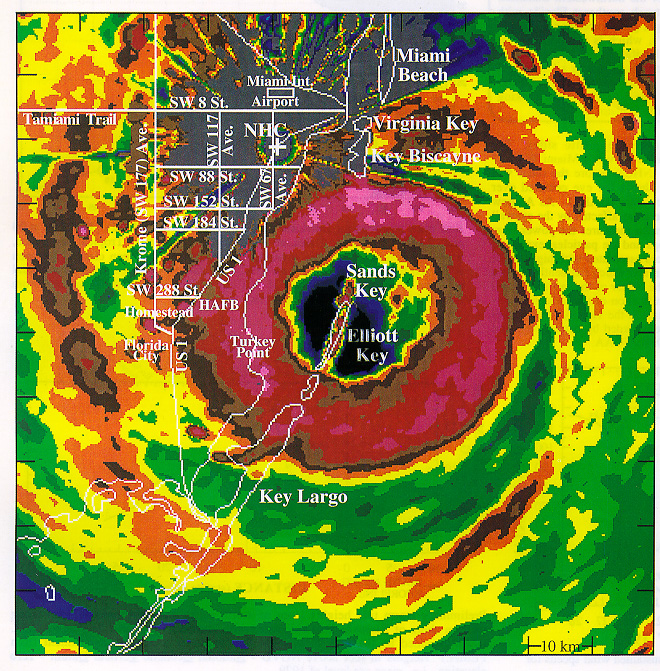 Hurricane Andrew had a major impact on south Florida and on HRD
in August of 1992. The AOML facility had only minor damage, as
the eyewall struck further south, on the tip of Key Biscayne.
But many Division personnel's homes were damaged or destroyed,
with the lives of some scientists in jeopardy. Andrew also precipitated
a move by AOC to the Tampa area, ending thirty-two years of Miami
based operation. It also sparked NHC to move from their Gables
One Tower facility to a hurricane-proof center built specifically
for them at Florida International University in west Dade county.
Andrew also generated a number of
scientific papers by HRD, examining its wind field,
damage patterns, and its explosive intensification during landfall.
Indeed, rapid intensification (RI) is a problem which HRD continues
to explore, with experiments designed to measure the role of
warm sea eddies, and parameters added to the SHIPS to attempt to
predict RI. By 2000 SHIPS was also forecasting intensity change
for storms after landfall. The decay rate of tropical cyclones
over land was the basis of several studies by HRD
and CIRA scientists.
Hurricane Andrew had a major impact on south Florida and on HRD
in August of 1992. The AOML facility had only minor damage, as
the eyewall struck further south, on the tip of Key Biscayne.
But many Division personnel's homes were damaged or destroyed,
with the lives of some scientists in jeopardy. Andrew also precipitated
a move by AOC to the Tampa area, ending thirty-two years of Miami
based operation. It also sparked NHC to move from their Gables
One Tower facility to a hurricane-proof center built specifically
for them at Florida International University in west Dade county.
Andrew also generated a number of
scientific papers by HRD, examining its wind field,
damage patterns, and its explosive intensification during landfall.
Indeed, rapid intensification (RI) is a problem which HRD continues
to explore, with experiments designed to measure the role of
warm sea eddies, and parameters added to the SHIPS to attempt to
predict RI. By 2000 SHIPS was also forecasting intensity change
for storms after landfall. The decay rate of tropical cyclones
over land was the basis of several studies by HRD
and CIRA scientists.
 Late in 1992 and early in 1993 HRD scientists once again
traveled with the NOAA P3s to participate in yet another international
weather science project, the Tropical Ocean-Global Atmosphere
Coupled Ocean Atmosphere Response Experiment (TOGA
COARE). Based at Guadalcanal, the experiment was designed
to measure the heat, moisture, and momentum fluxes as well as
the rainfall over the warm pool in the western Pacific. This is
a critical area in driving the heat engine of the atmosphere.
Late in 1992 and early in 1993 HRD scientists once again
traveled with the NOAA P3s to participate in yet another international
weather science project, the Tropical Ocean-Global Atmosphere
Coupled Ocean Atmosphere Response Experiment (TOGA
COARE). Based at Guadalcanal, the experiment was designed
to measure the heat, moisture, and momentum fluxes as well as
the rainfall over the warm pool in the western Pacific. This is
a critical area in driving the heat engine of the atmosphere.
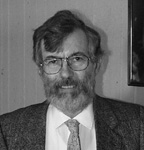 Over the past decade, a series of experiments were conducted on the daily
formation and growth of the south Florida sea breeze, that included
P3 flights into evolving sea breeze fronts. These studies were
supervised by Dr. Robert Burpee, who in 1993 succeeded Dr. Rosenthal
as HRD Director. Dr. Rosenthal continued to work for a
couple more years as a co-operative researcher. Dr. Burpee had
headed the Division's Hurricane Field Program for a number
of years, and had spearheaded the Synoptic Flow experiments, which
had long needed an aircraft that would fly much higher than the
P3s, and sample more of the atmosphere.
Over the past decade, a series of experiments were conducted on the daily
formation and growth of the south Florida sea breeze, that included
P3 flights into evolving sea breeze fronts. These studies were
supervised by Dr. Robert Burpee, who in 1993 succeeded Dr. Rosenthal
as HRD Director. Dr. Rosenthal continued to work for a
couple more years as a co-operative researcher. Dr. Burpee had
headed the Division's Hurricane Field Program for a number
of years, and had spearheaded the Synoptic Flow experiments, which
had long needed an aircraft that would fly much higher than the
P3s, and sample more of the atmosphere.
Continue...
 With Hurricane Debby in 1982 the Lab began a
series of experiments using Omega dropwindsondes to fill in the
vast oceanic data voids in the forecast models. One or both P3s
would fly synoptic scale patterns around the hurricane, and every
20 minutes or so drop a sonde out of the plane. The dropwindsonde
would drift down on a parachute and radio back to the plane the
temperature, humidity, and pressure, and using the Omega navigational
signals, triangulate its position. This information was used by
the plane's computer to estimate the winds the sonde was falling
through. Put together with other drops a three dimensional profile
of the synoptic-scale atmosphere surrounding the storm was synthesized.
Including this vital information in the hurricane track forecast
models was shown to improve the accuracy by 20-30%.
With Hurricane Debby in 1982 the Lab began a
series of experiments using Omega dropwindsondes to fill in the
vast oceanic data voids in the forecast models. One or both P3s
would fly synoptic scale patterns around the hurricane, and every
20 minutes or so drop a sonde out of the plane. The dropwindsonde
would drift down on a parachute and radio back to the plane the
temperature, humidity, and pressure, and using the Omega navigational
signals, triangulate its position. This information was used by
the plane's computer to estimate the winds the sonde was falling
through. Put together with other drops a three dimensional profile
of the synoptic-scale atmosphere surrounding the storm was synthesized.
Including this vital information in the hurricane track forecast
models was shown to improve the accuracy by 20-30%.  A contingent of HRD scientists and technicians remained stationed
at NHC to compile catalogs of output from a new storm surge model,
the Sea, Lake Overland Surges from Hurricanes (SLOSH). These catalogs
mapped possible hurricane flooding and required that each basin
be meticulously, numerically rendered. These catalogs were then
given to emergency personnel in the target cities to aid in evacuation
planning.
A contingent of HRD scientists and technicians remained stationed
at NHC to compile catalogs of output from a new storm surge model,
the Sea, Lake Overland Surges from Hurricanes (SLOSH). These catalogs
mapped possible hurricane flooding and required that each basin
be meticulously, numerically rendered. These catalogs were then
given to emergency personnel in the target cities to aid in evacuation
planning.  HRD and AOC used films taken during hurricane flights to
update the long out-of-date sea surface catalog used to estimate
surface wind speeds by flight directors. Thousands of frames of
35mm and 16mm film were searched for examples, and then correlated
to the aircraft wind speed. Sophisticated planetary boundary layer
models were used to estimate the surface wind speed that went
with those flight level pictures.
HRD and AOC used films taken during hurricane flights to
update the long out-of-date sea surface catalog used to estimate
surface wind speeds by flight directors. Thousands of frames of
35mm and 16mm film were searched for examples, and then correlated
to the aircraft wind speed. Sophisticated planetary boundary layer
models were used to estimate the surface wind speed that went
with those flight level pictures.  The dramatic El Niño of 1982/83 spurred research into the
relationship of ENSO and Atlantic hurricane frequency, and also
renewed interest in hurricane climatology. The historical record
was searched for possible precursor signals that might hint at
future tropical activity. AOML researchers began looking at decadal
and longer patterns in hurricane occurrence that might be linked
to long term oceanic cycles.
The dramatic El Niño of 1982/83 spurred research into the
relationship of ENSO and Atlantic hurricane frequency, and also
renewed interest in hurricane climatology. The historical record
was searched for possible precursor signals that might hint at
future tropical activity. AOML researchers began looking at decadal
and longer patterns in hurricane occurrence that might be linked
to long term oceanic cycles.  The skills of several Division scientist in dropsonde processing,
airborne weather research, and land based radar recording led
to them be involved in the Genesis of Atlantic Lows Experiment
(GALE) in 1986. The experiment was designed to examine winter
storms off the east coast of the United States, with an emphasis
on explosively developing storms. Of value in itself, it was also
hoped the knowledge gained from GALE would give new insights into
rapidly intensifying hurricanes.
The skills of several Division scientist in dropsonde processing,
airborne weather research, and land based radar recording led
to them be involved in the Genesis of Atlantic Lows Experiment
(GALE) in 1986. The experiment was designed to examine winter
storms off the east coast of the United States, with an emphasis
on explosively developing storms. Of value in itself, it was also
hoped the knowledge gained from GALE would give new insights into
rapidly intensifying hurricanes.
 The following year, HRD scientists traveled with the NOAA
P3s to Darwin, Australia to participate in the Equatorial Mesoscale
Experiment (EMEX). EMEX was to profile oceanic cloud clusters
in the monsoonal flow near the equator. This data would be important
in topical meteorology, climate studies, and in global climate
models.
The following year, HRD scientists traveled with the NOAA
P3s to Darwin, Australia to participate in the Equatorial Mesoscale
Experiment (EMEX). EMEX was to profile oceanic cloud clusters
in the monsoonal flow near the equator. This data would be important
in topical meteorology, climate studies, and in global climate
models.
 During the Summer of 1991 HRD personnel travelled to Acapulco,
Mexico with the NOAA P3s to participate in the Tropical EXperiment
in MEXico (TEXMEX). Headed by Dr. Kerry Emmanuel (MIT), the experiment
was designed to investigate incipient tropical cyclones as they
moved into the Eastern North Pacific, off the Mexican coast, and
look at the role of moisture, as measured by equivalent potential
temperature, in the formation of hurricanes.
During the Summer of 1991 HRD personnel travelled to Acapulco,
Mexico with the NOAA P3s to participate in the Tropical EXperiment
in MEXico (TEXMEX). Headed by Dr. Kerry Emmanuel (MIT), the experiment
was designed to investigate incipient tropical cyclones as they
moved into the Eastern North Pacific, off the Mexican coast, and
look at the role of moisture, as measured by equivalent potential
temperature, in the formation of hurricanes.
 Hurricane Andrew had a major impact on south Florida and on HRD
in August of 1992. The AOML facility had only minor damage, as
the eyewall struck further south, on the tip of Key Biscayne.
But many Division personnel's homes were damaged or destroyed,
with the lives of some scientists in jeopardy. Andrew also precipitated
a move by AOC to the Tampa area, ending thirty-two years of Miami
based operation. It also sparked NHC to move from their Gables
One Tower facility to a hurricane-proof center built specifically
for them at Florida International University in west Dade county.
Andrew also generated a number of
Hurricane Andrew had a major impact on south Florida and on HRD
in August of 1992. The AOML facility had only minor damage, as
the eyewall struck further south, on the tip of Key Biscayne.
But many Division personnel's homes were damaged or destroyed,
with the lives of some scientists in jeopardy. Andrew also precipitated
a move by AOC to the Tampa area, ending thirty-two years of Miami
based operation. It also sparked NHC to move from their Gables
One Tower facility to a hurricane-proof center built specifically
for them at Florida International University in west Dade county.
Andrew also generated a number of  Late in 1992 and early in 1993 HRD scientists once again
traveled with the NOAA P3s to participate in yet another international
weather science project, the Tropical Ocean-Global Atmosphere
Coupled Ocean Atmosphere Response Experiment
Late in 1992 and early in 1993 HRD scientists once again
traveled with the NOAA P3s to participate in yet another international
weather science project, the Tropical Ocean-Global Atmosphere
Coupled Ocean Atmosphere Response Experiment  Over the past decade, a series of experiments were conducted on the daily
formation and growth of the south Florida sea breeze, that included
P3 flights into evolving sea breeze fronts. These studies were
supervised by Dr. Robert Burpee, who in 1993 succeeded Dr. Rosenthal
as HRD Director. Dr. Rosenthal continued to work for a
couple more years as a co-operative researcher. Dr. Burpee had
headed the Division's Hurricane Field Program for a number
of years, and had spearheaded the Synoptic Flow experiments, which
had long needed an aircraft that would fly much higher than the
P3s, and sample more of the atmosphere.
Over the past decade, a series of experiments were conducted on the daily
formation and growth of the south Florida sea breeze, that included
P3 flights into evolving sea breeze fronts. These studies were
supervised by Dr. Robert Burpee, who in 1993 succeeded Dr. Rosenthal
as HRD Director. Dr. Rosenthal continued to work for a
couple more years as a co-operative researcher. Dr. Burpee had
headed the Division's Hurricane Field Program for a number
of years, and had spearheaded the Synoptic Flow experiments, which
had long needed an aircraft that would fly much higher than the
P3s, and sample more of the atmosphere. 